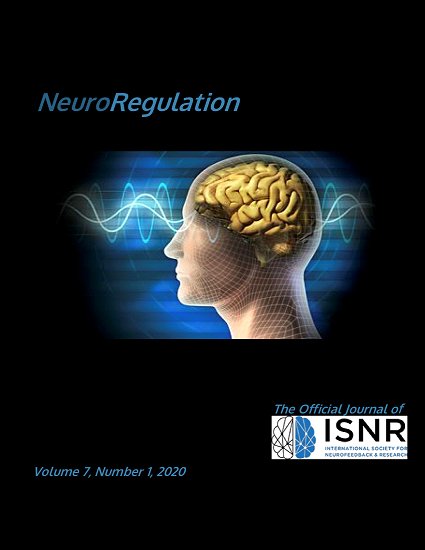Long-Term Lead Performance for Vagus Nerve Stimulation: Low Rate of Complications and Failures
DOI:
https://doi.org/10.15540/nr.7.1.26Keywords:
autonomic regulation therapy, vagus nerve stimulation, device performance, heart failureAbstract
Background: Vagus nerve stimulation (VNS) has been shown to improve cardiac function and heart failure symptoms. The VITARIA System provides chronic stimulation through a self-sizing, atraumatic lead placed around the cervical vagus nerve. The lead is identical to the predecessor M304 lead, which has been implanted in patients since 2009 for treatment of epilepsy and depression. Its long-term performance has not been previously reported. Methods: All leads implanted in the United States for any indication were included in this analysis. All available data on lead explants, replacements, and customer complaints were used to identify failures. Lead survival was defined as likelihood of the implanted lead remaining implanted and performing as intended. Results: The M304 lead has been part of 31,000 implantations, with 72,100 device-years of patient exposure. In 11,000 patients, 99.4% of leads remained implanted and performing as intended after 1 year. At 7 years, 95.7% of leads performed as intended. Lead failure is rare, with common causes being infection (0.87%) and vocal cord dysfunction (0.68%). Conclusions: The M304 VNS lead has been used for neuromodulation in over 30,000 patients for over 70,000 device-years. Cumulative lead survival has exceeded design requirements and has low rates of complications and failures.
References
Anand, I. S., Konstam, M. A., Ardell, J. L., Libbus, I., & DiCarlo, L. (2019). Neuromodulation for drug-refractory epilepsy and chronic heart failure: Targets, delivery, composition and titration. International Journal of Neurology and Neurotherapy, 6(2), 091. https://doi.org/10.23937/2378-3001/1410091
Ben-Menachem, E. (2002). Vagus-nerve stimulation for the treatment of epilepsy. The Lancet Neurology, 1(8), 477–482. https://doi.org/10.1016/S1474-4422(02)00220-X
Groves, D. A., & Brown, V. J. (2005). Vagal nerve stimulation: A review of its applications and potential mechanisms that mediate its clinical effects. Neuroscience & Biobehavioral Reviews, 29(3), 493–500. https://doi.org/10.1016/j.neubiorev.2005.01.004
Jänig, W. (2006). Functional anatomy of the peripheral sympathetic and parasympathetic system. In The integrative action of the autonomic nervous system: Neurobiology of homeostasis (pp. 13–34). Cambridge, UK: Cambridge University Press.
Kalbfleisch, J. D., & Prentice, R. L. (1980). The statistical analysis of failure time data. New York, NY: John Wiley & Sons.
Konstam, M. A., Udelson, J. E., Butler, J., Klein, H. U., Parker, J. D., Teerlink, J. R., … DiCarlo, L. A. (2019). Impact of autonomic regulation therapy in patients with heart failure: ANTHEM-HFrEF pivotal study design. Circulation: Heart Failure, 12(11), e005879. https://doi.org/10.1161/circheartfailure.119.005879
Morris, G. L., & Mueller, W. M. (1999). Long-term treatment with vagus nerve stimulation in patients with refractory epilepsy. Neurology, 53(8), 1731–1735. https://doi.org/10.1212/WNL.53.8.1731
Premchand, R. K., Sharma, K., Mittal, S., Monteiro, R., Dixit, S., Libbus, I., … Anand, I. S. (2014). Autonomic regulation therapy via left or right cervical vagus nerve stimulation in patients with chronic heart failure: Results of the ANTHEM-HF trial. Journal of Cardiac Failure, 20(11), 808–816. https://doi.org/10.1016/j.cardfail.2014.08.009
Premchand, R. K., Sharma, K., Mittal, S., Monteiro, R., Dixit, S., Libbus, I., … Anand, I. S. (2016). Extended follow-up of patients with heart failure receiving autonomic regulation therapy in the ANTHEM-HF study. Journal of Cardiac Failure, 22(8), 639–642. https://doi.org/10.1016/j.cardfail.2015.11.002
Premchand, R. K., Sharma, K., Mittal, S., Monteiro, R., Libbus, I. DiCarlo, L., … Anand, I. (2019). Long-term follow-up of reduced ejection fraction heart failure patients receiving autonomic regulation therapy in the ANTHEM-HF pilot study. Journal of the American College of Cardiology, 73(9 Suppl. 1), 770. https://doi.org/10.1016/S0735-1097(19)31378-6
Tolley, H. D., Barnes, J. M., & Freeman, M. D. (2016). Survival analysis. In M. D. Freeman & M. P. Zeegers (Eds.), Forensic epidemiology: Principles and practice (pp. 261–284). London, UK: Elsevier Inc.
Downloads
Published
Issue
Section
License
Authors who publish with this journal agree to the following terms:- Authors retain copyright and grant the journal right of first publication with the work simultaneously licensed under a Creative Commons Attribution License (CC-BY) that allows others to share the work with an acknowledgement of the work's authorship and initial publication in this journal.
- Authors are able to enter into separate, additional contractual arrangements for the non-exclusive distribution of the journal's published version of the work (e.g., post it to an institutional repository or publish it in a book), with an acknowledgement of its initial publication in this journal.
- Authors are permitted and encouraged to post their work online (e.g., in institutional repositories or on their website) prior to and during the submission process, as it can lead to productive exchanges, as well as earlier and greater citation of published work (See The Effect of Open Access).











